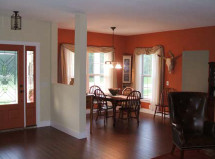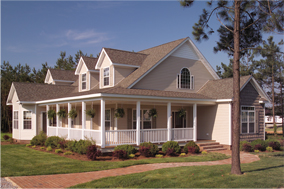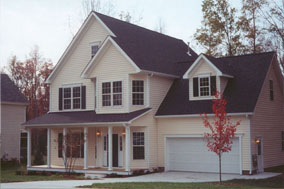Modular home construction is a concept that is growing rapidly. Why? Because it is more efficient, sturdy with a faster construction time. Modular homes can be constructed in just 4-8 weeks once the design process is completed. This is why modular construction for vacation homes is the perfect option. There are those who subscribe to...
Read MoreModular Homes VA Blog
Modular homes from Tidewater Custom Modular Homes are catering more and more to high-end homebuyers with customized, amenity-filled homes. Homeowners in the Virginia who want to design and build their own homes are building modular homes because modular is just as luxurious and just as sturdy as traditionally built homes, or more so. However,...
Read MoreModular homes are changing their reputation, as climate-controlled home-building factories increasingly cater to high-end home buyers and investors with customized, amenity-filled homes. Real estate agents are coming across more and more modular homes being built and put on the market, a sign that homeowners and homebuilders are seeing these homes as luxurious and just as...
Read MoreFactory-built modular homes appear to be on the rise, as climate-controlled home-building factories are increasingly are catering to high-end home buyers and investors in the region with customized, amenity-filled homes. Edward Mathis, a Re/Max agent for 12 years, has recently come across more than a few modular homes being built and put on the market,...
Read MoreThe VA will guarantee loans for prefab homes and modular construction. However, it's all about risk. So, here is what is important to remember, and what is not. A. The VA does not loan the money, it guarantees a portion of the loan that the lenders or banks make for the purchase of you modular...
Read MoreModular homes are constructed in an environmentally protected factory. The quality control methods can now be applied to home construction. A better built, quality controlled home is now available to homeowners. The cost savings can be significant, up to 30%. The benefits of a modern assembly line, low waste, reusable designs, and bulk material buy...
Read MoreIf you are considering building a new home, you should understand modular construction and understand the pro’s of buying one. 1. Modular homes can be constructed almost anywhere. 2. They are generally more affordable, in dollars and time, than stick built homes. 3. The floor plan can be customized. 4. Modular homes are built...
Read MoreMany people are hesitant to consider modular homes because they think that the construction design is limited, but that is no longer the case. In fact, just like with stick built homes, the first phase of modular construction is designing your floor plan. Modular homes are then constructed and assembled using factory production methods. Each...
Read MoreWe warmly and humbly reflect upon calendar year 2012 with a genuine sense of professional accomplishment and appreciation for both our clients and those of you following our blog. The final quarter of every calendar year is fun for us as we expand our custom modular home product and service offerings. Today, however, is a...
Read MoreIn modular construction, the framing, roofing, plumbing, cabinetry, interior finish, heating, air conditioning, and electric wiring are exactly what you would expect in a conventional stick built home. The main difference is the location of construction. Stick built homes are built right on-site, exposing the material to inclement weather, vandalism, and other adverse conditions. ...
Read More






